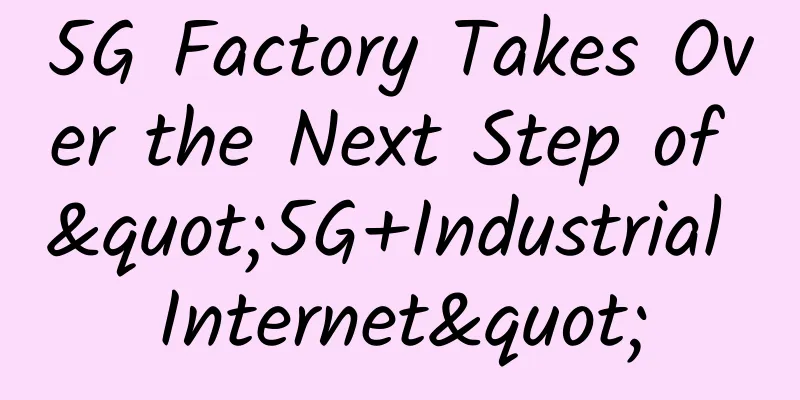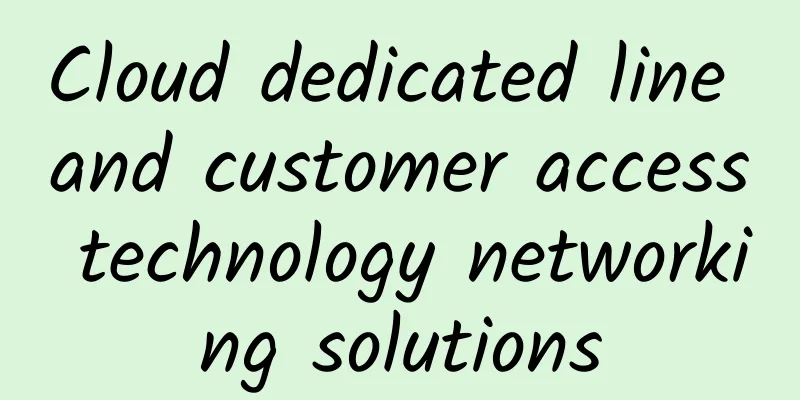my country's industrial Internet platform construction faces four major bottlenecks

|
The Guiding Opinions of the State Council on Deepening the Development of Industrial Internet through "Internet + Advanced Manufacturing" proposed that "by 2025, 3-5 internationally competitive industrial Internet platforms will be formed". Cultivating an internationally competitive industrial Internet platform is related to the competition for the dominance of industrial operating systems in the next 10-15 years, and to the establishment, consolidation and strengthening of a country's competitive advantage in manufacturing. Building a local industrial Internet platform is time-sensitive, arduous and has a great mission. From the supply side, my country's industrial Internet platform faces four major "neck-stuck" bottlenecks in industrial data collection, big data modeling and analysis, industry mechanism model precipitation, and industrial APP cultivation, and it is urgent to make breakthroughs as soon as possible.
Bottleneck 1: Difficulty in connecting equipment to the Internet and weak industrial data collection capabilities Data collection is the foundation of the industrial Internet platform. The first problem that the industrial Internet platform needs to solve is to connect people, machines and business systems in the industry, but it is not easy to connect equipment at the industrial site. At present, more than 80% of the machines and equipment in my country's large-scale industrial enterprises are "dumb" devices that are not connected to the Internet and cannot speak. Only 20% of the equipment is connected to the Internet and can speak, but these devices follow different communication protocols and have serious "language barriers", which has become a bottleneck restricting the construction of the industrial Internet platform. On the one hand, 80% of the equipment is not connected to the Internet, and the level of digitalization of the equipment is low. The overall level of my country's manufacturing industry is in the transition stage from 2.0 to 3.0, with many old equipment and low digitalization level. In 2017, the digitalization rate of production equipment of my country's large-scale industrial enterprises was 44.8%, and the networking rate of digital equipment was 39.0%. It is necessary to connect the equipment to the Internet by adding sensors, etc., which makes data collection on the industrial Internet platform difficult, costly and inefficient. On the other hand, 20% of the devices are connected to the Internet, but the communication protocols are not unified. In the past 30 years, various automation manufacturers, research institutions, and standardization organizations around the world have launched hundreds of fieldbus protocols, industrial Ethernet protocols, and wireless protocols around device networking. The protocol standards are numerous and relatively closed, making it difficult for industrial equipment to interconnect, which seriously restricts the equipment from going to the cloud. There is an urgent need to build a technical product system that can be compatible with and convert multiple protocols. Bottleneck 2: Data is not easy to use and industrial big data modeling and analysis capabilities are weak The goal is not to connect industrial equipment to the Internet, but to establish a digital mirror of industrial equipment in cyberspace, and to use industrial big data and artificial intelligence to "train" industrial apps that solve actual business pain points. The essence of the industrial Internet platform is to model and analyze the data generated by machines and equipment and business systems, and to convert data into application services that guide equipment and business optimization. Currently, limited by the bottleneck of data collection and the professional, relevant, procedural, sequential and analytical characteristics of industrial big data, industrial big data modeling and analysis requires platform companies to have both industrial genes and big data genes, resulting in the relatively weak industrial big data modeling and analysis capabilities of existing industrial Internet platforms. First, the data types are incomplete, which restricts the modeling and analysis of industrial big data and the functions of industrial APPs. Compared with the Internet big data that focuses on the "quantity" and "relevance" of data, industrial big data pays more attention to the "completeness" and "relevance" of data to ensure that comprehensive information on the real status of industrial equipment can be extracted from the data. Limited by the insufficient equipment data collection capabilities and incomplete data sources, this will restrict the development of industrial big data modeling and analysis and industrial APPs to a certain extent. At present, there are many industrial APPs developed based on a single data source, and few industrial APPs developed based on multi-source heterogeneous data such as equipment and business systems. Second, the data quality is not high, which restricts the modeling and analysis of industrial big data and the performance of industrial apps. Industrial big data often has omissions, dispersion, and intermittence. Low-quality data will directly lead to the inability to use modeling and analysis results or more serious consequences. It is necessary to predict and modify the data quality. Therefore, data "cleaning" work may even account for about 70% of the time of industrial app development. Due to data quality issues, there are more industrial apps for status monitoring and fault diagnosis on the current industrial Internet platform, and fewer industrial apps for prediction and warning, especially intelligent decision-making. Bottleneck 3: Models cannot keep up, and the industry mechanism model sedimentation ability is weak The industry mechanism model is the core of industrial PaaS and a concentrated embodiment of the platform's technical capabilities. The industry mechanism model is to make the operating rules of the entire manufacturing process, such as industrial R&D design, production and manufacturing, and business management, explicit, modeled, and coded through software technology. Each industry mechanism model is a building block module that can be flexibly called by industrial APP developers to promote the precipitation, dissemination, reuse, and value creation of industrial knowledge. The outstanding problems facing the current industrial Internet platform are insufficient development tools and the lack of industry mechanism models, which are far from fully meeting the needs of industrial-grade applications. First, my country's industrial software is backward, and it is difficult to quickly transfer offline capabilities to online models. China's manufacturing industry accounts for more than 20% of the world's manufacturing industry, but China's industrial software market share accounts for only 1.7% of the world's industrial software market share. At the same time, more than 90% of China's industrial software is imported. This fully shows that my country's industrial technology software level and accumulation are far from enough, and it lacks the offline strength to model and code industry mechanisms in a short period of time. Second, my country has a large number of industrial categories, and it will take time to establish a complete industry model library. my country has 39 major industrial categories, 191 medium categories, and 525 small categories. It is the only country in the world that has all the industrial categories in the United Nations industrial classification. Each industry has its own unique industry knowledge. It is a systematic project to encapsulate the industrial basic principles, key basic materials, core basic parts (components), advanced basic processes, and industrial technology foundations of each industry into digital models, which requires the joint efforts of the government and the whole society. Bottleneck 4: Small number of applications and weak ability to cultivate phenomenal industrial apps Industrial APPs are the key to the industrial Internet platform. However, due to the fact that the industrial Internet platform is still in its early stages of development and the lack of empowerment of the industrial PaaS platform, the so-called industrial APPs on the industrial Internet platform are basically "immigrants" from the cloud software on the industrial cloud platform. There are few "indigenous" industrial APPs that "grow" based on the industry mechanism model on the industrial PaaS, and there is an even greater lack of phenomenal industrial APPs. On the one hand, the number of industrial apps developed based on the industrial PaaS platform is small. According to GE's forecast, the industrial Internet platform will experience explosive growth similar to that of the consumer Internet platform around 2020, and the total number of industrial apps on the Predix platform will exceed 500,000. According to public data from leading domestic industrial Internet platform companies such as Aerospace Cloud Network, Haier, Shugen Internet, Oriental Guoxin, Xugong Information, UFIDA, Sowei, Tsinghua Unigroup, Inspur, Zhejiang University Central Control, and Intelligent Cloud Technology, the number of industrial apps in my country does not exceed 5,000, which is far from meeting the cloud needs of enterprises. Among these 5,000 industrial apps, many are traditional software cloud-based apps, which can only be regarded as "immigrants" on the industrial Internet platform. There are only a handful of industrial apps that have truly "grown" from the industrial PaaS platform. On the other hand, the industrial Internet platform has not yet cultivated a phenomenal industrial APP. Uptake, a US startup, has developed an industrial APP for condition monitoring and fault warning around Caterpillar construction machinery, which has been connected to more than 3 million construction machinery. The company's current valuation has reached US$2.3 billion. So far, although many companies in my country are working towards building cross-industry and cross-field industrial Internet platforms, no company has developed a phenomenal industrial APP to trigger the application and promotion of industrial Internet platforms. Countermeasures and Suggestions The industrial Internet platform field spans a wide range and has a complex system. From technology, industry to application, it is still in the early stages of development. To build an industrial Internet platform with international competitiveness, we need strategic determination, government guidance and market dominance, and it will require long-term efforts of 10-15 years. 1. Make up for shortcomings and consolidate the four foundations of "one hard, one soft, one network, and one security" The industrial Internet platform is not an isolated technology, but a comprehensive technical system, which is the culmination of modern information technology. At present, we should focus on the four basics of "hardware, software, network and security", increase support and promote the research and development and industrialization of key technologies. First, we should enhance the support capacity of the automatic control and perception industry, and accelerate the research and development and industrialization of intelligent sensors, programmable logic controllers, distributed control systems, data acquisition and monitoring systems, etc. Second, we should implement the industrial technology software project, and promote the research and development and industrialization of core technologies such as industrial cloud operating systems, new industrial software, industrial big data modeling and analysis, and microservice components. Third, we should consolidate the network foundation of the industrial Internet platform, promote the IP-based, wireless, flat and flexible technical transformation and construction deployment of the factory intranet, accelerate the deployment of new network technologies such as NB-IoT, and accelerate the research and deployment of new generation network technologies such as software-defined networks and network function virtualization. Fourth, we should build an industrial Internet security assurance system, strengthen the security assurance capabilities of equipment, networks, controls, applications and data, and achieve all-round protection of industrial production systems and commercial systems. 2. Build an ecosystem and vigorously cultivate the open source community and developers of the industrial Internet platform In today's era, software open source and hardware openness have become an irreversible trend. Controlling the open source ecosystem will become the focus of the global industrial Internet platform. First, it is recommended to cultivate the open source community, guide automation companies to open various standard compatibility and protocol conversion technologies, realize the orderly flow of industrial data between multi-source equipment and heterogeneous systems, ensure that industrial equipment can be "connected", and guide industrial Internet platform companies to open development tools, knowledge components, and algorithm components to build an open, shared, resource-rich, and innovative industrial APP development ecosystem to ensure that the model industry mechanism model can "keep up". Second, accelerate the construction of the industrial APP developer talent team, support industrial Internet platform companies to hold developer entrepreneurship and innovation competitions, create a new "double innovation" ecosystem based on the industrial Internet platform, and promote the "quantity" of industrial APPs in a short period of time. 3. Focus on testing, insist on building platforms, using platforms, testing platforms and developing collaboratively Adhere to the coordinated promotion of "building platforms", "using platforms" and "testing platforms", build, test and promote at the same time, use testing to promote construction and use testing to promote use, and create a virtuous cycle of rich platform functions and massive use, two-way iteration, mutual promotion and progress. First, in terms of the cultivation of cross-industry and cross-field industrial Internet platforms, it is recommended to refer to the cultivation method of the National Manufacturing Innovation Center, introduce industrial Internet platform selection standards, adhere to the principle of "one discussion for each case, one mature, one selection", and cultivate 10 cross-industry and cross-field platforms in three years. Second, in terms of the application and promotion of industrial Internet platforms, it is recommended to strengthen the linkage between ministries and provinces, select a group of provinces with high local enthusiasm and good cloud foundation for enterprises as demonstration provinces for the application of industrial Internet platforms, and promote the overall cloudization of enterprises in the "block economy" industrial agglomeration areas of the demonstration provinces. Third, in terms of experimental testing of industrial Internet platforms, test verification should be carried out around equipment protocol compatibility, platform functional integrity, data security and other contents to provide basic support for the large-scale application of industrial Internet platforms. |
<<: 5 blockchain trends for 2018
>>: How to Develop an Effective Data Center Management Services Plan
Recommend
Kunpeng spreads its wings and shines its wisdom in Tianjin | The results of the finals of the Kunpeng Application Innovation Competition 2020 (Tianjin Division) are out!
On the afternoon of August 21, the final of the K...
You have no objection to calling it the "perpetual motion machine" of the communication system, right?
The communication power supply is the "heart...
Tencent Cloud first order promotion: 1C2G5M server 50 yuan/year, CDN traffic package starting from 9 yuan
Tencent Cloud's Double Eleven event officiall...
Comparison of new number segment packages of the three major operators: Which one do you prefer?
Since the beginning of 2018, the new number segme...
The State Council has deployed to promote the speed increase and fee reduction, and operators have spared no effort on the road to benefit the country and enterprises
In the continuous promotion of network speed-up a...
Soul-searching question: How many HTTP requests can be sent through a TCP connection?
A classic interview question is what happens from...
5G has not been affected by the COVID-19 pandemic, and commercial deployment is accelerating
Mobile service providers are moving towards 5G ne...
What are honeypots, honey baits, honey tags, honeynets, honey farms... in network security?
As security practitioners, whether we are doing p...
Interview: ZooKeeper 23 questions, see if you can answer them
1. What is ZooKeeper? ZooKeeper is a distributed,...
Mathematical formula could help 5G networks share communication frequencies efficiently
Researchers at the National Institute of Standard...
Ftpit: $3.49/month KVM-1GB/20GB/1TB/3 data centers in Fremont, Los Angeles, and New York
Ftpit is a foreign hosting company founded in 201...
Ovum Observation: SDN/NFV Significantly Reduces Time to Market for Services of Operators in Emerging Markets
Early morning news on January 11, for communicati...
Wi-Fi 7 is on the way, is there a market for Wi-Fi 6E in China?
On January 7, US time, the Wi-Fi Alliance launche...
Blockchain cross-domain security solution
1. Evolution of blockchain development Looking ba...
In addition to the ping command, these network commands are also very useful
What we are going to talk about today is other co...









